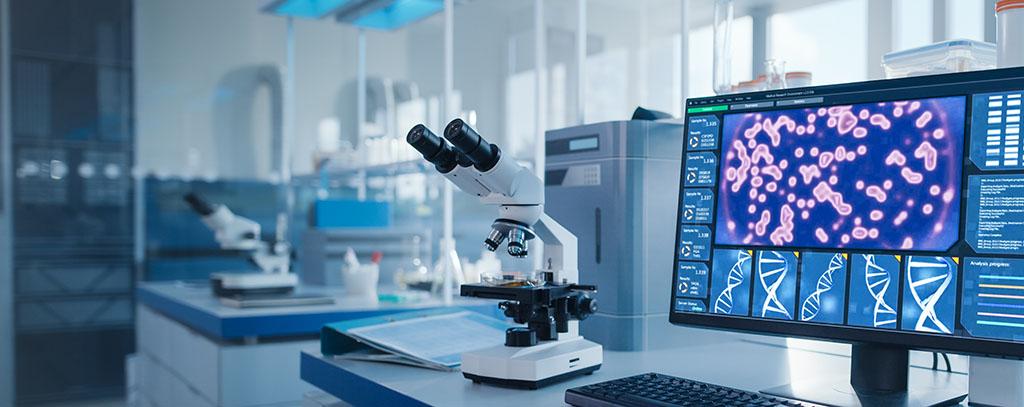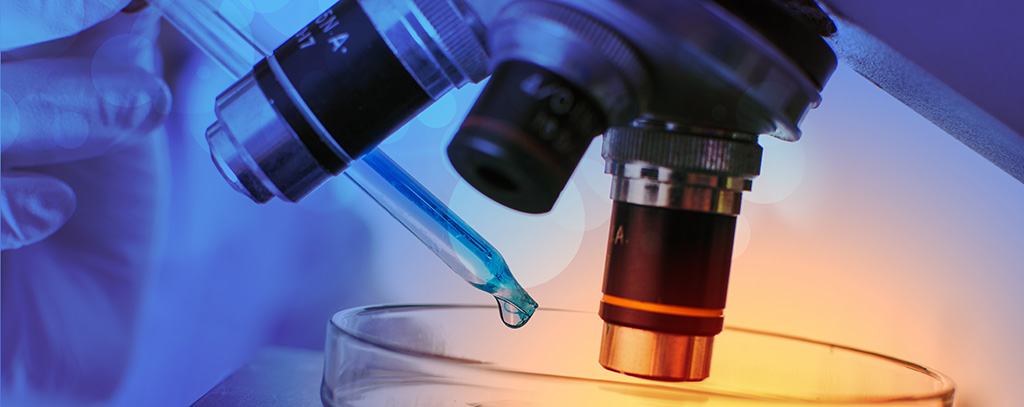


How Far Back Does a 10 Panel Drug Test Go? Key Details
April 17, 2023


How Accurate is a 10 Panel Drug Test: Comprehensive Guide
April 17, 2023Does alcohol show up on a drug test? This question is often asked by companies that purchase drug testing supplies, as they seek to maintain a safe and productive work environment. In this blog post, we'll explore the various drug tests available and how they measure alcohol levels in a person's system.
We will delve into urine tests, hair tests, saliva tests, and blood tests while discussing how each method detects alcohol consumption. Additionally, we'll examine factors that can affect the accuracy of these results such as time frame of consumption and testing, amount of alcohol consumed, and metabolism rate.
Finally, we'll assess the advantages and disadvantages of alcohol testing in relation to incorporating it into an organization's substance misuse screening program. So let us proceed with our analysis to answer the question: does alcohol show up on a drug test?
Table of contents
Types of Drug Tests
Drug testing is an essential tool for companies and organizations to ensure a safe and productive work environment. Different types of drug tests, such as urine, hair, saliva and blood tests are available to detect specific substances in the human body. In this section, we will discuss four common types of drug tests: urine, hair, saliva, and blood tests.
a. Urine Tests
Urine tests are the most widely used form of drug testing due to their affordability and ease of administration. Urine tests can be used to identify a variety of drugs, including marijuana, cocaine, amphetamines and opioids; however their detection window varies depending on the drug. However, they have a limited detection window that varies depending on the substance being tested for.
b. Hair Tests
Hair tests provide a longer detection window compared to urine or saliva tests since drugs remain in hair follicles for an extended period after use - typically up to 90 days or even longer in some cases. This type of test is useful when trying to determine long-term patterns of substance abuse but may not be suitable for detecting recent usage.
c. Saliva Tests
Saliva (oral fluid) tests offer non-invasive sample collection with quick results turnaround time making them ideal for roadside or workplace screenings where immediate action may be required based on test outcomes . They primarily detect recent drug use, usually within the past 24-48 hours.
d. Blood Tests
Blood tests are considered the most accurate form of drug testing as they directly measure the presence of drugs or their metabolites in a person's bloodstream. However, due to their invasive nature and higher costs associated with sample collection and analysis, blood tests are less commonly used for routine workplace drug screenings.
In addition to these primary types of drug tests, specialized alcohol detection methods may be employed depending on specific needs. The following sections will discuss how alcohol is detected through various testing methods and factors that can affect test accuracy.
Drug tests have a selection of characteristics, all with their own pros and cons. By understanding the different types of drug tests available, employers can determine which type is best suited for their needs. Moving on to how alcohol is detected in these various drug tests will provide more insight into this topic.
How Alcohol is Detected in Drug Tests
In this section, we will examine the various methods used to detect alcohol in drug tests. We will discuss urine, hair, saliva, and blood tests and how each of these can be utilized for detecting alcohol consumption. Bearing in mind potential sources of error, we'll investigate how each test may be used to detect alcohol consumption.
a. Urine Test for Alcohol Detection
Urine tests are a common method used to detect alcohol use as they are non-invasive and relatively inexpensive. These tests typically measure levels of ethyl glucuronide (EtG) or ethyl sulfate (EtS), which are byproducts of ethanol metabolism source. The presence of EtG or EtS in urine indicates recent alcohol consumption within approximately 80 hours prior to testing.
b. Hair Test for Alcohol Detection
Hair testing is another method employed to identify alcohol use over an extended period - up to several months depending on hair length source. This test measures fatty acid ethyl esters (FAEEs) and/or EtG present in hair samples collected from the individual being tested. While this method provides a longer detection window than other types of drug tests, it may not accurately indicate current impairment due to its focus on historical usage patterns.
c. Saliva Test for Alcohol Detection
Saliva-based drug testing offers a quick and minimally invasive option for detecting recent alcohol consumption within minutes after ingestion source. These tests measure the concentration of alcohol present in saliva, which correlates with blood alcohol levels. However, factors such as mouthwash or breath fresheners containing alcohol may lead to false-positive results.
d. Blood Test for Alcohol Detection
Blood tests are considered the most accurate method for detecting current impairment due to alcohol consumption source. This test precisely measures an individual's BAC to determine the level of intoxication at the time of testing, although it is more costly and invasive than other methods. While highly accurate, this method is invasive and more expensive than other options discussed above.
Drug tests can spot alcohol by a range of means, for instance through urine, hair, saliva or blood. Though the exactness of outcomes may fluctuate contingent upon variables, for example, measure of utilization and timing or testing.
Factors that Affect the Accuracy of Drug Testing Results
These include time frame of consumption and testing, amount consumed, and metabolism rate.
a. Time Frame of Consumption and Testing
The detection window for alcohol in drug tests varies depending on the type of test used. For example, urine tests can typically detect alcohol within 12 to 48 hours after consumption (source). On the other hand, hair tests have a much longer detection window - up to 90 days or more (source). Saliva and blood tests usually have shorter detection windows than urine tests but are still effective at detecting recent alcohol use.
b. Amount of Alcohol Consumed
The quantity of alcohol consumed plays a significant role in determining its presence in drug test samples. Higher levels of consumption generally result in higher concentrations detected during testing (source). However, individual tolerance levels may also affect how quickly one's body metabolizes and eliminates alcohol from their system.
- Light drinking: Low amounts may not be detectable by some drug tests if enough time has passed since consumption.
- Moderate drinking: May be detected by most types of drug tests within their respective detection windows.
- Heavy drinking: Likely to be detected by all types of drug tests, even after a longer period since consumption.
c. Metabolism Rate
Individual metabolism rates can significantly impact the detection of alcohol in drug tests. Factors that influence one's metabolism rate include age, gender, body weight, and overall health (source). Faster metabolisms tend to break down and eliminate alcohol more quickly from the body than slower ones. Two people who have taken the same amount of alcohol may demonstrate different results in their drug tests due to dissimilar metabolism rates.
In summary, it is essential for companies using drug testing supplies like those provided by Halux Diagnostic to consider these factors when interpreting test results for alcohol use. Understanding how time frame of consumption and testing, amount consumed, and individual metabolism rates affect accuracy will help ensure fair assessment practices within your organization.
It is important to understand the various factors that can affect the accuracy of drug testing results, as this knowledge can help companies make informed decisions when selecting a reliable and effective drug testing program. Exploring the advantages and disadvantages of utilizing drug tests to determine alcohol consumption is next on our agenda.
Pros and Cons of Drug Testing for Alcohol Use
By considering both the benefits and drawbacks to using these methods to detect alcohol consumption, companies can make informed decisions about implementing drug testing policies.
a. Pros of Drug Testing for Alcohol Use
- Deterrence: Regularly conducting drug tests may deter employees from consuming alcohol before or during work hours, leading to a safer work environment.
- Safety: Identifying employees who are under the influence of alcohol can help prevent accidents in high-risk workplaces such as construction sites or manufacturing plants. The National Safety Council provides information on how substance abuse affects workplace safety.
- Compliance: Some industries require regular drug testing due to federal regulations, ensuring that businesses stay compliant with laws governing their sector.
- Evidence in legal proceedings: In cases where an employee's actions while under the influence lead to legal disputes, having accurate test results can provide valuable evidence supporting a company's position.
b. Cons of Drug Testing for Alcohol Use
- Invasion of privacy: Employees may feel that mandatory drug tests invade their personal lives and infringe upon their right to privacy outside working hours.
- Potential false positives/negatives: No test is perfect; there is always a risk of false positive or negative results which could lead to unfair consequences for employees involved. For more information on factors affecting test accuracy, refer to the Substance Abuse and Mental Health Services Administration (SAMHSA) guidelines.
- Cost: Implementing a comprehensive drug testing program can be expensive for companies, especially if they opt for more advanced tests like hair or blood analysis.
- Limited detection window: Some tests may not detect alcohol use beyond a certain time frame, making it difficult to identify employees who consumed alcohol outside of work hours but are still impaired during their shift. For example, urine tests typically have a shorter detection window compared to hair or blood tests.
Taking into account these pros and cons will help businesses determine whether implementing drug testing policies for alcohol use is appropriate in their specific workplace context. It's essential to weigh the potential benefits against any drawbacks before deciding on an approach that best suits your company's needs and values.
Weighing the advantages and drawbacks of drug testing for alcohol use is essential prior to coming to any conclusion. To conclude this discussion on drug testing for alcohol use, let us now look at a summary of findings and recommendations.
Conclusion and Recommendations on Drug Testing for Alcohol Use
After examining the various types of drug tests and their effectiveness in detecting alcohol use, it is essential to consider some recommendations when implementing these tests within a company or organization.
a. Summary of Findings on Drug Testing for Alcohol Use
- Urine Tests: While urine tests are commonly used for detecting drugs, they may not be as effective in identifying recent alcohol consumption due to its rapid elimination from the body.
- Hair Tests: Hair testing can detect long-term alcohol use but may not be suitable for determining short-term or occasional drinking patterns.
- Saliva Tests: Saliva tests offer a non-invasive method of detecting recent alcohol consumption but have limitations regarding detection time frames.
- Blood Tests: Blood tests provide accurate results related to current blood-alcohol levels; however, they are invasive and require trained personnel to administer them properly.
b. Recommendations on Drug Testing for Alcohol Use
- Determine your organization's goals: Before selecting a drug test type, consider whether you need to identify short-term or long-term alcohol use among employees. When deciding between the various testing methods, such as hair, saliva, urine or blood tests, take into account whether you need to detect short-term or long-term alcohol use among personnel. (SAMHSA) .
- Create clear policies: Develop comprehensive workplace policies that outline expectations surrounding substance abuse and clearly communicate these guidelines with all employees (SHRM).
- Provide employee education: Offer educational resources and training programs to help employees understand the risks associated with alcohol consumption, as well as the importance of maintaining a drug-free workplace (CDC).
- Offer support services: Establish an Employee Assistance Program (EAP) or similar support system for employees struggling with substance abuse issues. This can provide confidential assistance and resources to help individuals overcome their challenges (EAPA).
By carefully considering your organization's needs and implementing appropriate testing methods, policies, education initiatives, and support systems, you can create a safer work environment that promotes employee health and wellbeing.
Frequently Asked Questions Does alcohol Show Up on a Drug Test
Does alcohol show up on a drug screen test?
Yes, alcohol can be detected in various drug screen tests such as urine, hair, saliva, and blood tests. However, the detection window varies depending on the type of test used. For instance, alcohol is detectable in urine for 12-48 hours after consumption.
What would cause alcohol to show up on a drug test?
Alcohol shows up on a drug test when it has been recently consumed or if its metabolites are still present in the body. Factors affecting detection include time frame of consumption and testing, amount of alcohol consumed, and an individual's metabolism rate.
What shows up in a drug urine test?
A drug urine test, also known as urinalysis, typically screens for multiple substances including amphetamines (methamphetamine), cannabinoids (THC), cocaine metabolites (benzoylecgonine), opiates (morphine/codeine) and phencyclidine (PCP). Alcohol may also be tested separately using ethyl glucuronide (EtG) markers.
What is the most common false positive drug test?
The most common false positive results occur with immunoassay-based screening methods due to cross-reactivity with other substances like over-the-counter medications or certain foods. For example, poppy seeds can cause false positives for opiates. Confirmatory tests like gas chromatography-mass spectrometry help to eliminate false positives.
Conclusion
In conclusion, drug testing for alcohol use is a complex process that can be affected by many factors. While the presence of alcohol in a person's system can be detected through certain types of drug tests, there are both benefits and drawbacks to consider before making any decisions about implementing such protocols. Ultimately, companies should weigh their options carefully before deciding whether or not they want to implement drug testing policies that include detecting does alcohol show up on a drug test. It may also be beneficial to consult an expert who specializes in workplace safety and health regulations regarding employee substance abuse screening procedures prior to making any decisions about implementing such protocols.
If you are looking for reliable and accurate drug testing supplies, Halux Diagnostic offers a wide selection of products to detect the presence of alcohol in your system. Let us help you make sure that any substance abuse is identified quickly and accurately with our trusted solutions.





